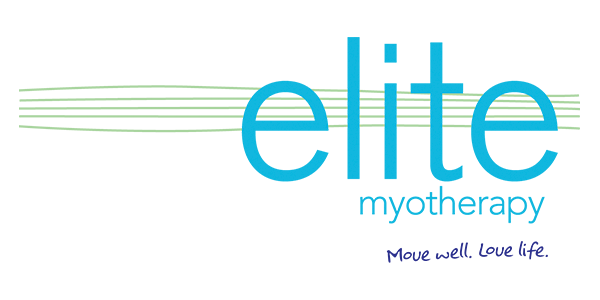Poor posture is more than just a bad habit; it’s a significant factor that can contribute to the development of chronic pain. In our modern world, where many of us spend hours hunched over computers or mobile devices, postural issues have become increasingly common. Understanding the connection between posture and chronic pain is essential for finding effective solutions, and this is where Myotherapy can play a transformative role.
The Impact of Poor Posture on Chronic Pain
When the body is in alignment, the muscles, joints, and spine work together efficiently, reducing strain and distributing weight evenly. Poor posture disrupts this balance, placing undue stress on certain muscles and joints. Over time, this can lead to a range of chronic pain conditions, including:
- Neck and Shoulder Pain: Slouching or leaning forward can cause the muscles in the neck and shoulders to become overworked and tense.
- Back Pain: An exaggerated curve in the lower back, often due to prolonged sitting, can lead to muscle stiffness and spinal disc issues.
- Headaches: Tension in the neck and shoulders from poor posture can contribute to tension headaches.
- Joint Pain: Misalignment can cause excessive wear on joints like the hips and knees, leading to discomfort and mobility issues.
Chronic pain resulting from poor posture doesn’t just affect physical health; it can also impact mental well-being, leading to decreased productivity, mood fluctuations, and a reduced quality of life.
How Myotherapy Addresses Postural Imbalances
Myotherapy is a form of physical therapy that focuses on assessing, treating, and managing musculoskeletal pain caused by poor posture, injury, or muscle dysfunction. Myotherapists employ a holistic approach to identify the root causes of pain rather than just addressing the symptoms.
Assessment and Diagnosis
A Myotherapist begins by conducting a thorough assessment of your posture, muscle function, and movement patterns. This may involve observing how you stand, sit, and move, as well as discussing your daily activities and any pain you’re experiencing. By identifying specific postural imbalances and areas of muscle tension, a personalised treatment plan can be developed.
Treatment Techniques
Myotherapy utilises a range of hands-on techniques to correct postural imbalances and relieve pain:
- Soft Tissue Manipulation: This involves deep tissue massage to release muscle tension and improve circulation.
- Myofascial Release: Gentle pressure is applied to the fascia (connective tissue) to alleviate tightness and restore normal function.
- Trigger Point Therapy: Targeting specific points of muscle tension to reduce referred pain and improve mobility.
- Joint Mobilisation: Gentle movements to improve joint function and alignment.
These techniques work together to relax overactive muscles, strengthen weaker ones, and realign the body’s structure. By addressing the underlying issues, Myotherapy not only provides immediate relief but also helps prevent the recurrence of pain.
Strategies for Maintaining Good Posture in Daily Life
In addition to hands-on treatment, Myotherapists provide education and strategies to help you maintain good posture outside of therapy sessions:
Personalised Exercise Programs
Developing a tailored exercise routine can strengthen postural muscles and increase flexibility. This may include:
- Strengthening Exercises: Focusing on the core, back, and shoulder muscles to support proper alignment.
- Stretching Routines: Targeting tight muscles that contribute to poor posture, such as the chest or hip flexors.
- Balance and Stability Work: Enhancing overall body awareness and control.
Ergonomic Advice
Adjustments to your daily environment can make a significant difference. A Myotherapist might suggest:
- Workstation Modifications: Ensuring your chair, desk, and computer are set up to promote neutral posture.
- Proper Footwear: Wearing supportive shoes that aid in maintaining alignment.
- Mindfulness Techniques: Being conscious of your posture throughout the day and making corrections as needed.
Education on Movement Patterns
Understanding how to move correctly during daily activities can prevent strain. This includes:
- Safe Lifting Techniques: Using the legs rather than the back to lift heavy objects.
- Correct Sitting Positions: Keeping feet flat on the floor, back straight, and shoulders relaxed.
- Regular Movement Breaks: Avoiding prolonged periods in one position by taking short breaks to stand and stretch.
The Lasting Benefits of Myotherapy
By combining targeted treatments with practical advice, Myotherapy empowers individuals to take control of their posture and overall health. The benefits extend beyond pain relief:
- Enhanced Mobility: Improved joint function and muscle flexibility make daily activities easier.
- Increased Energy Levels: Reduced muscle tension can lead to less fatigue and higher energy.
- Better Physical Performance: Proper alignment enhances athletic abilities and reduces injury risk.
- Improved Mental Well-being: Alleviating chronic pain contributes to better mood and reduced stress.
Poor posture is a common issue that can lead to chronic pain and negatively impact quality of life. Myotherapy offers an effective solution by addressing the root causes of postural imbalances through personalised treatment and education. By correcting alignment, relieving muscle tension, and providing strategies for maintaining good posture, Myotherapy helps individuals move freely and live more comfortably.
If you’re experiencing pain that you suspect may be related to poor posture, consider reaching out to a qualified Myotherapist. With their expertise, you can begin a journey towards lasting relief and a healthier, more active lifestyle.







